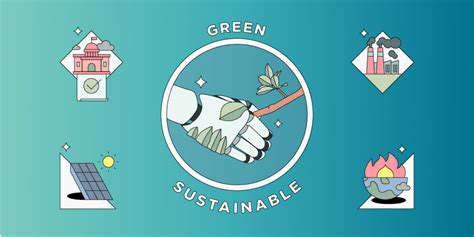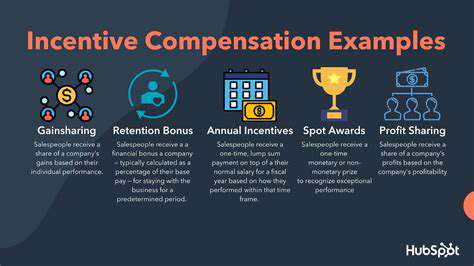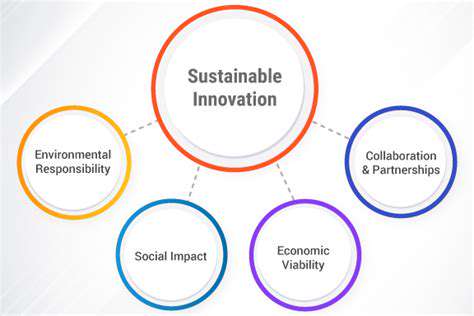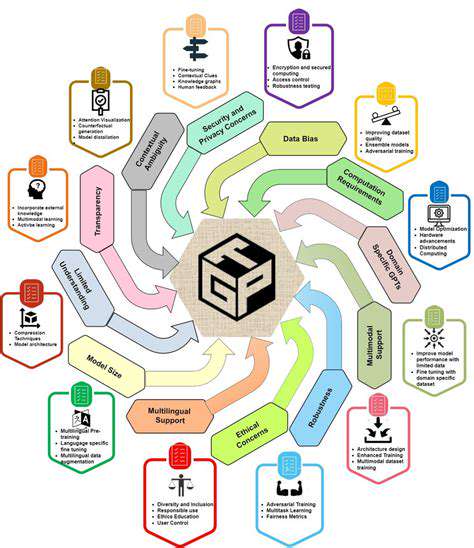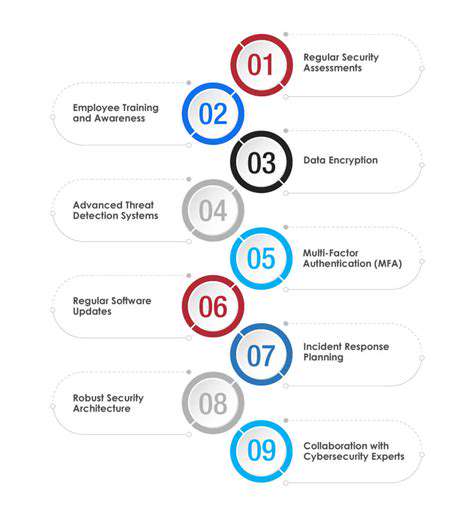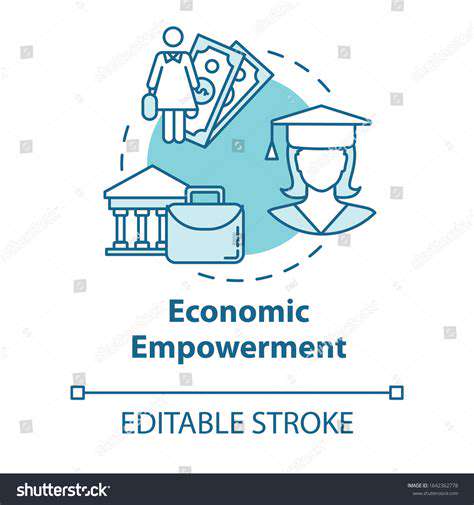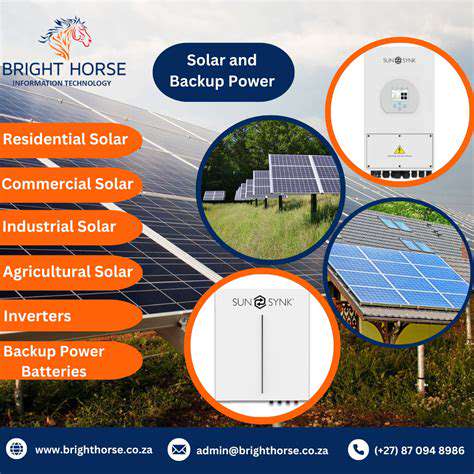Residential Energy Storage for Load Shifting
Understanding Load Shifting
Load shifting, a core function of residential energy storage, involves strategically adjusting the timing of energy consumption. Instead of drawing electricity from the grid at peak demand times, often during midday or evening hours, energy storage systems allow homeowners to shift their energy usage to off-peak hours. This can significantly reduce the overall demand placed on the power grid, potentially leading to lower electricity bills and greater grid stability.
This process allows for a more balanced energy distribution throughout the day, thereby reducing the strain on the power grid infrastructure. By storing energy when it's readily available and cheaper, such as during off-peak hours, and releasing it during peak times, consumers can optimize their energy consumption and contribute to a more efficient energy system.
Reduced Energy Costs
One of the most tangible benefits of load shifting enabled by residential energy storage is the potential for reduced energy costs. By strategically shifting energy usage away from peak demand periods, homeowners can take advantage of lower electricity rates that are often associated with off-peak hours. This translates directly into substantial savings on monthly energy bills, making energy storage a financially attractive option for many households.
This savings potential is further enhanced by the ability to utilize renewable energy sources more effectively. By storing energy generated from solar panels or other renewable sources during periods of high generation, homeowners can use this stored energy during peak demand times, further minimizing reliance on the grid and reducing energy costs.
Improved Grid Stability
Residential energy storage systems contribute to a more stable and reliable power grid. By reducing the fluctuating demand during peak hours, homeowners can help alleviate the strain on the grid infrastructure. This stability is crucial for the efficient and reliable operation of the power system as a whole, reducing the risk of outages and improving the overall quality of power delivered to homes and businesses.
The collective impact of many homeowners using energy storage systems to shift their energy consumption patterns can lead to significant improvements in grid stability. This is especially important as the integration of renewable energy sources, such as solar, increases the need for more flexible and responsive energy management systems.
Enhanced Renewable Energy Integration
Load shifting plays a critical role in enhancing the integration of renewable energy sources, like solar, into the energy system. Solar panels often produce excess energy during daylight hours, which can overwhelm the grid if not managed effectively. Residential energy storage systems can absorb this excess energy and release it later, during periods of higher demand or when solar generation is low.
This capability allows homeowners to maximize the use of their renewable energy resources, minimizing reliance on the grid and promoting a more sustainable energy future. Furthermore, load shifting enables the use of renewable energy sources even during periods when solar irradiance might be low, such as cloudy days or at night. This flexibility is key to the successful and widespread adoption of renewable energy.
The Technology Behind Residential Energy Storage Systems
Battery Technology: The Core Component
Residential energy storage systems are fundamentally powered by batteries. These batteries, typically lithium-ion, store energy generated from renewable sources like solar panels or wind turbines. Lithium-ion batteries have revolutionized energy storage due to their high energy density, meaning they can store a significant amount of energy in a relatively compact space. Understanding the chemistry and engineering behind these batteries is crucial for maximizing their performance and lifespan. Different types of lithium-ion chemistries offer various trade-offs in terms of cost, safety, and performance characteristics, impacting the overall cost and efficiency of the residential energy storage system.
The technology behind these batteries is constantly evolving, with researchers continuously working to improve their energy density, lifespan, and safety. This ongoing development is crucial for the widespread adoption of residential energy storage as a practical and reliable solution for homeowners.
Inverters: Transforming DC to AC
Residential energy storage systems typically operate on direct current (DC) from the batteries. However, the electrical grid and most household appliances operate on alternating current (AC). Inverters are essential components that seamlessly convert the DC energy stored in the batteries into usable AC energy. These inverters are often integrated with the energy storage system, ensuring a smooth transition between stored energy and the home's needs.
Different types of inverters exist, each with its own set of characteristics affecting efficiency and cost. Understanding the role of inverters is vital in understanding the overall effectiveness of a residential energy storage system, as their efficiency directly impacts the amount of energy available to the home.
Control Systems: Smart Management
Sophisticated control systems are at the heart of modern residential energy storage systems. These systems monitor energy flow, manage charging and discharging cycles, and optimize energy usage based on real-time conditions. They communicate with other smart home devices, allowing for automated adjustments to energy consumption patterns based on factors like solar irradiance, electricity prices, and household energy needs.
These control systems are crucial for maximizing the benefits of energy storage, ensuring that the stored energy is used optimally, and potentially reducing energy bills.
Monitoring and Communication: Real-Time Insights
Modern residential energy storage systems often come equipped with advanced monitoring and communication features. These systems provide homeowners with real-time data on energy usage, battery health, and system performance. This data allows for informed decisions about energy consumption and management, and can help identify potential issues or inefficiencies within the system. Homeowners can track energy production, consumption, and battery level through intuitive interfaces, providing valuable insights into the system's operation.
The ability to monitor and communicate with the system is vital in ensuring that homeowners fully understand and utilize the potential of their energy storage solution.
Safety and Reliability: Protecting Your Investment
Safety and reliability are paramount considerations in residential energy storage systems. Rigorous safety measures are incorporated into the design and manufacturing processes to prevent potential hazards. These measures include advanced thermal management systems, over-current protection, and robust enclosure designs to mitigate any risks. Ensuring the long-term reliability of the system is also crucial, and manufacturers often provide warranties and support for maintenance and troubleshooting.
The emphasis on safety and reliability is essential for homeowners to feel confident in investing in and using these systems for long-term energy management needs.
Semantic search, unlike traditional keyword-based searches, delves into the meaning and context behind user queries. This sophisticated approach goes beyond simply matching keywords and instead interprets the intent and meaning of the search, allowing for more accurate and relevant results. It's crucial for businesses to move beyond basic keyword matching to truly understand what customers are looking for, and AI plays a vital role in enabling this type of search.
Integrating Energy Storage with Solar Panels
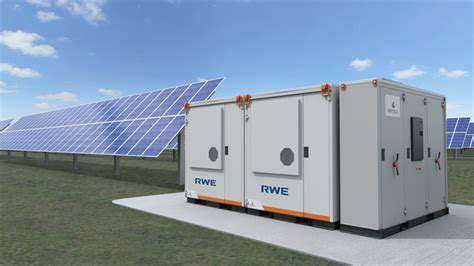
Optimizing Energy Storage Integration
Integrating energy storage systems effectively with existing power grids requires careful planning and consideration of various factors. This involves a comprehensive analysis of the energy storage system's technical specifications, such as its capacity, power output, and efficiency, in relation to the specific needs of the grid. Moreover, the integration process must address the operational challenges, including the management of charging and discharging cycles, to ensure optimal grid performance and stability.
A critical aspect of optimizing energy storage integration is the development of robust control algorithms. These algorithms should be able to dynamically adjust the energy flow between the storage system and the grid based on real-time conditions, such as fluctuating energy demand and renewable energy generation. This dynamic management is essential to maintain grid stability and reliability.
Addressing Grid Infrastructure Challenges
Integrating energy storage systems often necessitates upgrades to existing grid infrastructure. This includes the reinforcement of transmission and distribution lines to accommodate the increased energy flow and the installation of appropriate switching and protection equipment. These upgrades are crucial to ensure the safe and reliable operation of the grid with the addition of energy storage.
Careful planning and execution of these infrastructure improvements are paramount to prevent disruptions and ensure seamless integration. The cost and time associated with these upgrades must be carefully evaluated against the potential benefits of enhanced grid stability and the ability to better accommodate fluctuating renewable energy sources.
Managing Energy Flow and Demand
Effective energy storage integration requires sophisticated algorithms for managing energy flow and demand. These algorithms should seamlessly integrate with existing grid management systems to monitor and regulate the energy exchange between the energy storage system and the broader power grid. This intelligent management is crucial for maintaining grid stability and preventing power outages.
Dynamic energy pricing models can be employed to incentivize energy storage usage during peak demand periods. This approach can help to mitigate the strain on the grid and ensure efficient use of energy storage capacity. Furthermore, these models can contribute to a more sustainable and resilient energy system.
Evaluating Environmental Impact
The environmental impact of energy storage systems should be considered during the planning and implementation phases. This includes evaluating the lifecycle emissions associated with manufacturing, operation, and disposal of the storage devices. Careful consideration of the environmental footprint of various energy storage technologies is crucial to selecting the most sustainable option.
The choice of materials and manufacturing processes will significantly affect the overall environmental impact. Furthermore, the potential for the storage system to integrate with renewable energy sources to reduce reliance on fossil fuels should be assessed thoroughly.
Beyond Cost Savings: Environmental and Grid Benefits

Embracing Sustainable Practices
Beyond the immediate financial benefits, adopting Sustainable practices offers a multitude of advantages that extend far beyond the bottom line. Companies that integrate environmental consciousness into their core operations often experience a boost in brand reputation and customer loyalty. Consumers are increasingly aware of the environmental impact of products and services, and they are more likely to support businesses that demonstrate a commitment to sustainability. This growing demand creates a competitive advantage for companies that proactively address environmental concerns.
Furthermore, embracing sustainable practices can lead to innovative solutions and process improvements. Identifying and minimizing environmental footprints often necessitates a deeper understanding of operations, leading to opportunities for efficiency gains. For example, reducing energy consumption through more efficient equipment can not only lower utility bills but also lead to a smaller carbon footprint.
Minimizing Environmental Impact
Sustainable practices are crucial to minimizing the environmental impact of business operations. Reducing waste, conserving resources, and implementing cleaner technologies are essential steps to mitigating harm to the environment. These actions can also lead to significant cost savings in the long run, reducing the need for expensive remediation or regulatory compliance.
Implementing strategies for waste reduction, such as recycling and composting programs, can drastically cut down on landfill waste and conserve valuable resources. Choosing sustainable materials and packaging options, such as recycled paper or biodegradable plastics, further minimizes the environmental footprint.
Promoting Resource Efficiency
Resource efficiency is paramount in achieving environmental sustainability. Using resources judiciously and reducing consumption are crucial for minimizing environmental harm. This approach not only conserves precious natural resources but also reduces operational costs. Implementing energy-efficient technologies and practices can lead to significant reductions in energy consumption, resulting in lower utility bills and a smaller carbon footprint.
Optimizing supply chains to minimize transportation needs and promote local sourcing further enhances resource efficiency. By reducing the distance materials travel to reach manufacturing facilities, businesses reduce their carbon emissions and support local economies. These are just a few ways that companies can improve their resource efficiency.
Enhancing Brand Reputation
Consumers are increasingly conscious of environmental issues and are actively seeking out companies that demonstrate a commitment to sustainability. Implementing eco-friendly practices enhances a company's brand image, fostering trust and loyalty among customers. Companies perceived as environmentally responsible often attract a more dedicated customer base and are viewed as leaders in the industry. This positive image can translate into increased sales and market share.
Fostering Innovation and Growth
Embracing environmental sustainability is not just about reducing costs and mitigating risk. It also fosters innovation and drives growth opportunities. Developing and implementing new sustainable technologies and processes can lead to new product and service offerings. This innovative approach creates a competitive edge in the market and opens avenues for future growth. Companies that proactively address environmental concerns are better positioned to attract investors and talent, further enhancing their long-term prospects. This also means finding new and innovative ways to reduce their environmental impact, which can lead to more efficient and cost-effective operations.
